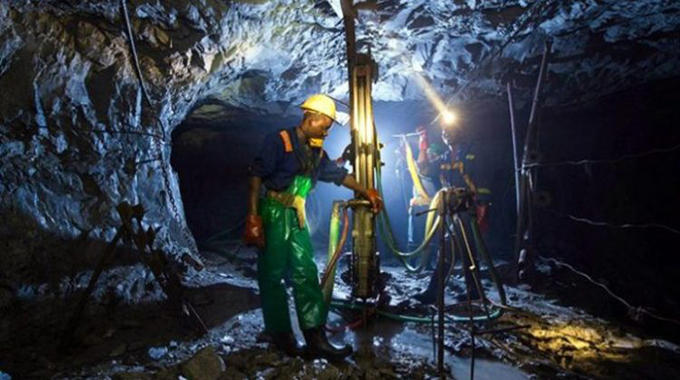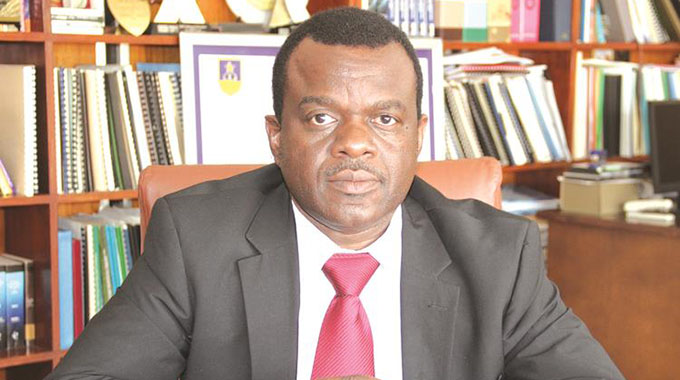Mining sector needs to dig deeper

Lovemore Chikova Development Dialogue
With more new mineral deposits being discovered in Zimbabwe, it is important that authorities devise new methods and approaches to the sector to ensure it fully benefits the country.
Zimbabwe is endowed with so many minerals including a huge potential to change the course of its history, yet the economic benefits have been minimal.
Recent revelations which show that huge diamond and gold deposits have been discovered in Mwenezi and Chiredzi in Masvingo, should induce a rethinking on how to approach this industry.
As the demand for the minerals is expected to rise and gold prices hit record highs, Zimbabwe has a unique opportunity to tap into an industry that has proven potential to change its course.
The Government is targeting making mining a US$12 billion industry by 2023, and the discovery of the huge deposits of diamonds and gold add impetus to achieving this vision.
What is needed is for the authorities to start devising ways on value addition and beneficiation to these minerals.
Of course, many people still have memories of the Chiadzwa diamonds and the opaque way in which they were handled by the old dispensation.
A lot of issues emanated from the mining of the diamonds in Chiadzwa, to the extent that people were left unsure of how they could have helped the country’s economy.
It was an ironic situation in which the country was said to have one of the largest diamond fields in the world, yet the proceeds were failing to help revive its economy.
One reason for this was the lack of value addition and beneficiation, which resulted in the diamonds fetching low prices on the international market.
Corruption was also regularly cited as a reason as to why the diamonds appeared to be of no effect to economic revival.
Lessons should be drawn from the Chiadzwa experiences so that the country fully benefits from its mineral resources in future.
Apart from value addition and beneficiation, Government should seek genuine partners willing to invest in the mining of the diamonds and gold.
Rules and regulations should be set out to strictly ensure that the mining is done openly, and that there is accountability.
Apart from the discoveries in the Lowveld, it is expected that the mining industry as a whole will anchor the country’s development going forward.
This can be achievable considering that the country possesses most of the key minerals that are much sought after in the world.
The seriousness shown by the New Dispensation in developing the mining industry should be a good starting point, as the political will is already there.
It has not been in doubt that Zimbabwe has tremendous potential for developing its mining industry to the extent of creating value chains that can result in the creation of jobs and other services.
The strategic roadmap to achieve the US$12 billion mining industry by 2023 should be complemented by encouraging investments in the sector.
The building blocks for achieving this vision are already in place, with the mining sector generating foreign currency, and contributing about 70 percent of the country’s forex earnings.
There are a lot of low-hanging fruits or quick-win projects that are already being considered or can be considered for a quick impact in the short to medium term.
In fact, the mining industry on its own is a strategic sector that can be successfully harnessed for the achievement of Vision 2030, to have an upper middle income economy.
There are more than 40 different minerals in Zimbabwe in the categories of precious metals, base metals, industrial metals and gemstones. Many of the minerals have not been fully exploited and those that are being mined have not sufficiently benefited the country in terms of contributing to quick development. The Government should quickly consider setting good conditions to attract investors in the mining sector.
Win-win partnerships should be encouraged to ensure that while luring the investors, the country does not end up losing out in terms of proceeds.
Apart from that, there should be clear and well set out incentives for the attraction of investors to the mining sector.
It should be a golden rule that to continue mining, the investor should at one point, ensure the setting up of a processing plant for value addition and beneficiation of the minerals. There is nothing that can stop investors in the diamond fields in the Lowveld from setting up processing plants for the gems and eventually establish a diamonds products city in the area.
Establishment of infrastructure such as rail, roads, electricity and water in the mining areas, not only in the Lowveld, should be one of the priorities for the attraction of both local and foreign investors.
There should be clear key deliverables for the sector in the areas of exploration, investment, capacity building and increased productivity.
Employment creation, value addition, exports, foreign currency generation and ensuring optimum benefits to the country should be the other priorities.
What makes it a possibility that the mining sector can achieve the set targets is the interest shown by investors who have started work on various mega projects in the country.
The Great Dyke Investment (GDI) platinum project in Mashonaland West is already taking shape and poised to become the second biggest platinum venture in Zimbabwe after Zimplats.
The joint venture between Zimbabwe and Russia is expected to carry out massive infrastructure development and create jobs.
Work at the mine is progressing well, with rapid progress having been made on the first box cut where excavations have revealed optimistic results from extensive drilling of about 130 000 metres.
What makes this venture the more significant is that Zimbabwe has the world’s second largest platinum reserves after South Africa, with Russia coming in a close third.
GDI is expected to starting exporting the mineral in 2022, to feed into the Government’s grand plan of the US$12 billion mining industry by 2023.
The US$4.2 billion Karo Resources platinum mine preject in Mhondoro-Ngezi, also in Mashonaland West, is another massive mining project expected to change the course of the country’s development.
The company has completed some of the crucial stages towards full-fledged mining, including an aero-magnetic survey, digital terrain mapping and aero-magnetic and geophysics study of the area.
The mine is set to employ over 25 000 people and many others in downstream industries when fully operational.
The project envisages the construction of a 600MW power plant and base metal refinery in conjunction with other platinum mining companies.
Lithium mining venture, Arcadia Lithium Project, is another huge game changer in the mining sector, which has already secured Special Economic Zone status.
Located 38 kilometres east of Harare, the project recently discovered possible large deposits of caesium, a much sought after chemical element or metal used mainly in high temperature or high pressure oil and gas drilling, at its Arcadia Mine.
Under the US$12 billion mining roadmap, gold is expected to contribute US$4 billion, platinum US$3 billion while chrome, iron, steel diamonds and coal will contribute US$1 billion.
Lithium is expected to contribute US$500 million and other minerals will contribute US$1.5 billion.
Feedback: [email protected]










Comments